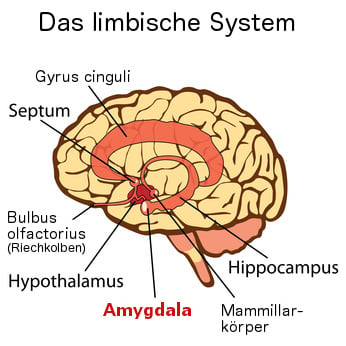In the web of fear
 Small, hairy, long-legged, disgusting: quite a few people feel a chill down their spine when faced with a spider. At the same time, you can hardly escape the creepy-crawlies, especially since you almost constantly run into them in basements or in nature. According to scientists, in Central Europe live about 1.5 million spiders on an area of 4,000 square meters.
Small, hairy, long-legged, disgusting: quite a few people feel a chill down their spine when faced with a spider. At the same time, you can hardly escape the creepy-crawlies, especially since you almost constantly run into them in basements or in nature. According to scientists, in Central Europe live about 1.5 million spiders on an area of 4,000 square meters.
Almost every tenth German suffers from a fear of spiders, the so-called arachnophobia. Experts suspect that people have been afraid of these creepy-crawlies for several hundred years.
At first glance, the spider phobia seems completely inappropriate, since in our latitudes there are only two specimens that can cause painful bites. Accordingly, the objective dangerousness of these insects plays less of a role in the development of a spider fear.
Rather, it is other aspects, such as the fact that they appear seemingly without warning and consequently suddenly, and mostly make unpredictable and rapid changes in movement, that cause this fear of creepy-crawlies.
Some people are frightened by the fact that the body of a spider does not resemble the human body in any way. But a negative, early childhood experience with the animal can also lead to a spider phobia. In addition, parents play an important role in the formation of arachnophobia as role models. If they overreact to the encounter with the insect, they literally teach their child to fear.
Where the fear of spiders comes from
Most feel disgust, the basis of which is innate in every human being and closely related to the urge to vomit and retch. In the past, some cultures believed that the small insects could transmit diseases. Disgust thus served as a protective mechanism. According to Charles Darwin, the resulting facial expression should warn fellow human beings of potential dangers. Accordingly, the fear of spiders is also a natural reaction, which has been valuable since human memory. It is designed to prompt us to act in dangerous situations and can thus prove to be life-saving.
In the vast majority of cases, it is a non-diseased fear of spiders accompanied by discomfort and a queasy feeling. Such reactions are not a cause for concern, but can severely limit quality of life.
Read the EMDR self-coaching report

EMDR self-coaching: Heike is no longer afraid of spiders
Coaching report on guided self-coaching of a non-diseased spider phobia with EMDR and the EMDR goggles REMSTIM 3000. When Heike (name changed) came to me, she was afraid of spiders.

EMDR self-coaching: Heike is no longer afraid of spiders
Coaching report on guided self-coaching of a non-diseased spider phobia with EMDR and the EMDR goggles REMSTIM 3000. When Heike (name changed) came to me, she was afraid of spiders.
Spider phobia only threatens to become pathological if the walk into the cellar, garage or garden shed is avoided on principle or the encounter with the creepy-crawly always causes sheer panic. Under these circumstances, a close look at your own spider fear can’t hurt. A pathological phobia of spiders may also be accompanied by sleep disturbances, fainting spells or depression.
How we can manage our fear

Overcoming fear in EMDR self-coaching with the EMDR goggles REMSTIM 3000
How we can unlearn our fears in self-coaching with EMDR and the EMDR glasses Remstim 3000. Fear reactions sometimes make themselves felt as quiet sensations, but more often than not,

Overcoming fear in EMDR self-coaching with the EMDR goggles REMSTIM 3000
How we can unlearn our fears in self-coaching with EMDR and the EMDR glasses Remstim 3000. Fear reactions sometimes make themselves felt as quiet sensations, but more often than not,










